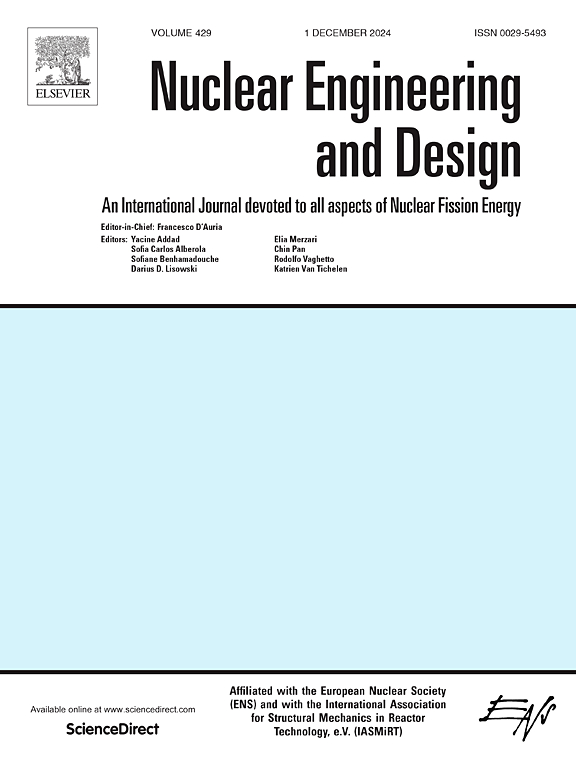Investigation on the effect of operational parameters in a microreactor system on the morphology and size distribution of thorium oxalate
IF 1.9
3区 工程技术
Q1 NUCLEAR SCIENCE & TECHNOLOGY
引用次数: 0
Abstract
Thorium oxide has recently garnered attention as a nuclear fuel due to the scarcity of uranium resources and the abundance of thorium resources, as well as its favorable thermal and neutronic properties. One of the most desirable characteristics of thorium nuclear fuels is their thermal properties, which are affected by the size distribution and morphology of thorium oxide particles. Thorium nitrate is the most common method for producing thorium oxide. Since no purification processes occur in the production of thorium oxide from oxalates, particle size and shape control are crucial. In this paper, the synthesis of thorium oxalate particles is carried out in a microreactor system to control the parameters of the precipitates. The main parameters that influence the efficiency, size distribution, and morphology of thorium oxalate are the concentration ratio of oxalic acid to thorium nitrate solution, as well as the flow rate ratio of these feed materials. Results show that at lower flow rate ratios of thorium nitrate to oxalic acid solution and higher concentration ratios of acid to thorium nitrate solution, a uniform particle size distribution and smaller particles are obtained, which are suitable for further calcination to prepare high-density and small grain size pellets.
求助全文
约1分钟内获得全文
求助全文
来源期刊

Nuclear Engineering and Design
工程技术-核科学技术
CiteScore
3.40
自引率
11.80%
发文量
377
审稿时长
5 months
期刊介绍:
Nuclear Engineering and Design covers the wide range of disciplines involved in the engineering, design, safety and construction of nuclear fission reactors. The Editors welcome papers both on applied and innovative aspects and developments in nuclear science and technology.
Fundamentals of Reactor Design include:
• Thermal-Hydraulics and Core Physics
• Safety Analysis, Risk Assessment (PSA)
• Structural and Mechanical Engineering
• Materials Science
• Fuel Behavior and Design
• Structural Plant Design
• Engineering of Reactor Components
• Experiments
Aspects beyond fundamentals of Reactor Design covered:
• Accident Mitigation Measures
• Reactor Control Systems
• Licensing Issues
• Safeguard Engineering
• Economy of Plants
• Reprocessing / Waste Disposal
• Applications of Nuclear Energy
• Maintenance
• Decommissioning
Papers on new reactor ideas and developments (Generation IV reactors) such as inherently safe modular HTRs, High Performance LWRs/HWRs and LMFBs/GFR will be considered; Actinide Burners, Accelerator Driven Systems, Energy Amplifiers and other special designs of power and research reactors and their applications are also encouraged.
 求助内容:
求助内容: 应助结果提醒方式:
应助结果提醒方式:


